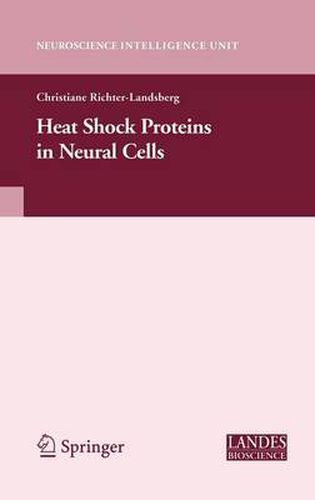Readings Newsletter
Become a Readings Member to make your shopping experience even easier.
Sign in or sign up for free!
You’re not far away from qualifying for FREE standard shipping within Australia
You’ve qualified for FREE standard shipping within Australia
The cart is loading…






This title is printed to order. This book may have been self-published. If so, we cannot guarantee the quality of the content. In the main most books will have gone through the editing process however some may not. We therefore suggest that you be aware of this before ordering this book. If in doubt check either the author or publisher’s details as we are unable to accept any returns unless they are faulty. Please contact us if you have any questions.
eat shock proteins (HSPs), also called stress proteins, are not only induced in response to elevated temperatures, but also as a result of various stress situations, including environmental strains, viral H infection, ischemia, anoxia and oxidative stress. These stress situations trigger cellular defence mechanisms that act as an emergency system capable of combatting the toxic consequences due to the accumulation of misfolded proteins. Heat shock proteins are involved in many physiological processes, including development and differentiation, organisation of the cytoarchi tecture by binding to cytoskeletal elements and regulation of the balance between cell death and survival. Many heat shock proteins work as molecular chaperones. In this role, they contribute to in vivo protein folding and prevent nonproductive interactions with other proteins and cellular c- ponents. In recent years it has been found that the chaperone system and the proteolytic machinery work closely together, and that proteasomal - hibition causes the upregulation of stress proteins. Impairment of the proteasomal machinery and chaperone functions lead to protein damage, which contributes to neurodegenerative disorders and to the aging process.
$9.00 standard shipping within Australia
FREE standard shipping within Australia for orders over $100.00
Express & International shipping calculated at checkout
This title is printed to order. This book may have been self-published. If so, we cannot guarantee the quality of the content. In the main most books will have gone through the editing process however some may not. We therefore suggest that you be aware of this before ordering this book. If in doubt check either the author or publisher’s details as we are unable to accept any returns unless they are faulty. Please contact us if you have any questions.
eat shock proteins (HSPs), also called stress proteins, are not only induced in response to elevated temperatures, but also as a result of various stress situations, including environmental strains, viral H infection, ischemia, anoxia and oxidative stress. These stress situations trigger cellular defence mechanisms that act as an emergency system capable of combatting the toxic consequences due to the accumulation of misfolded proteins. Heat shock proteins are involved in many physiological processes, including development and differentiation, organisation of the cytoarchi tecture by binding to cytoskeletal elements and regulation of the balance between cell death and survival. Many heat shock proteins work as molecular chaperones. In this role, they contribute to in vivo protein folding and prevent nonproductive interactions with other proteins and cellular c- ponents. In recent years it has been found that the chaperone system and the proteolytic machinery work closely together, and that proteasomal - hibition causes the upregulation of stress proteins. Impairment of the proteasomal machinery and chaperone functions lead to protein damage, which contributes to neurodegenerative disorders and to the aging process.